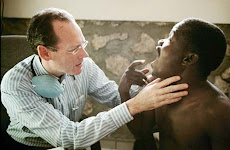Introduction
1st paragraph: Purpose of lab - understand basic principles of genetic engineering -In the first part of the lab, you will use antibiotic-resistance plasmids to transform Escherichia coli. In the second part, you will use gel electrophoresis to separate fragments of DNA for further analysis.
2nd paragraph: Discuss background information about bacterial transformation - define transformation and discuss how a plasmid is used to insert foreign DNA into a host organism.
3rd paragraph: Discuss background information about gel electrophoresis - restriction enzymes - where they come from? Hae III and EcoRI - sticky vs. blunt cuts - the principles of gel electrophoresis - charges - positive and negative ends - purpose - to determine sizes of cut DNA fragments.
4th paragraph: Briefly discuss procedure of Part 1 & Part 2 - Part 1 we had controls and experimental colonies of E.coli. In the control we inserted no plasmids and in the experimental group we inserted a plasmid which included a gene for antibiotic resistance. E.coli typically do not duplicate in the presence of ampicillin. Cultures were grown on 5 plate, two plates of agar with the plasmid and without the plasmid, two plates of ampicillin - with and without the plasmid, one plate with ampicillin and pBlu which would make the E.coli blue when they digested the agar. This plate had E.coli with the plasmid. Predictions were made about which colonies would and would not survive on each plate and results were calculated. In Part 2 two restriction enzymes were used to cut DNA and compared to an uncut sample of DNA. Hae III and EcoRI were used to cut DNA and compared to uncut DNA. They underwent gel elecrophoresis. Bands were stained and measured. A logarithmic graph was used to determine the number of base pairs each DNA fragment was made up of.
5th paragraph: Relate this lab to one of the major themes of AP Biology:
1. Science as a Process
2. Evolution
3. Energy Transfer
4. Continuity and Change
5. Relationship of Structure to Function
6. Regulation
7. Interdependence in Nature
8. Science, Technology, and Society
ProcedureSummarize the Procedure for Part 1: Bacterial Transformation
(if you do not have this lab sheet see me I have many copies)
Summarize the Procedure for Part 2: Gel Electrophoresis
Data
One to three sentence summary of Part 1:
Table 1: Results of Bacterial Transformation
Agar Plate with No Plasmid - Growth or No Growth
Agar Plate with Plasmid - Growth or No Growth
Agar Plate with Ampicillin and with No Plasmid - Growth or No Growth
Agar Plate with Ampicillin and Plasmid - Growth or No Growth
Agar Plate with Ampicillin and pBlu and Plasmid - Growth or No Growth
One to three sentences summary of Part 2:
Table 2: Hae III Fragment Sizes
(Table 6.1 we did in class)
Table 3: EcoRI Fragment Sizes
(Table 6.2 we did in class)
Graph 1: Fragment Sizes made from Restriction Enzymes
(Use Log Graph we did in class)
Conclusion
Paragraph 1: Summarize Purpose of two parts of lab, procedures, and predictions.
Paragraph 2: Summarize Results from Part 1: What were the results of the transformations? What was the transformation efficiency?
Paragraph 3: Summarize the Results for Part 2: What were the results of gel electrophoresis? How were fragment sizes determined? How did your interpolated results compare to actual results?
Paragraph 4: Discuss errors in lab
Paragraph 5: Discuss improvements to lab
Paragraph 6: Relate this lab to major themes in AP Biology




No comments:
Post a Comment